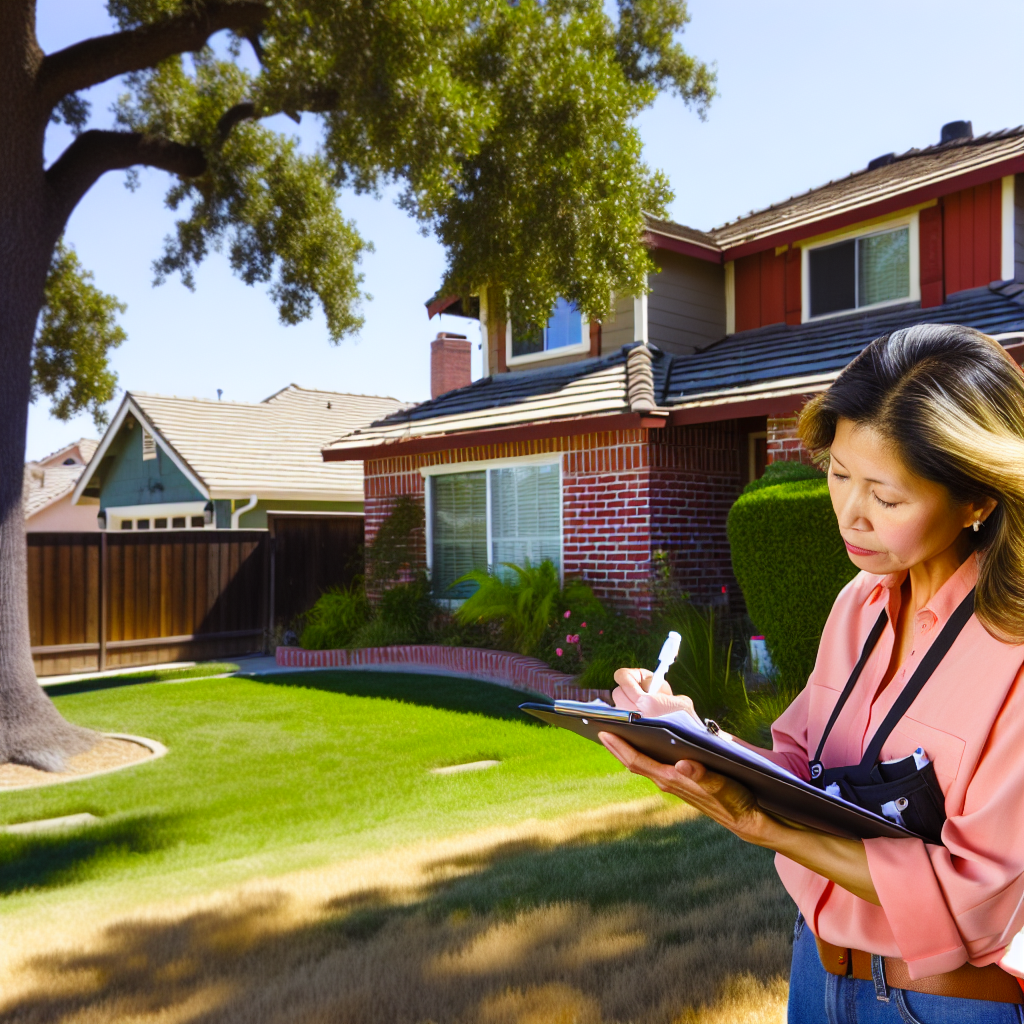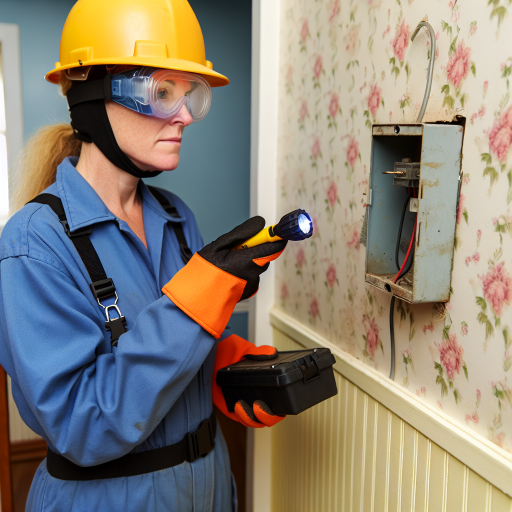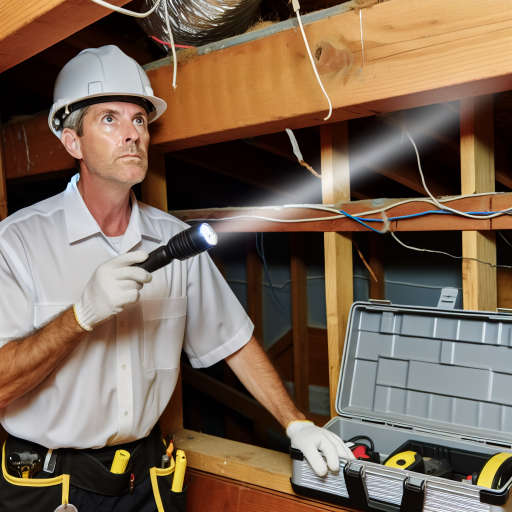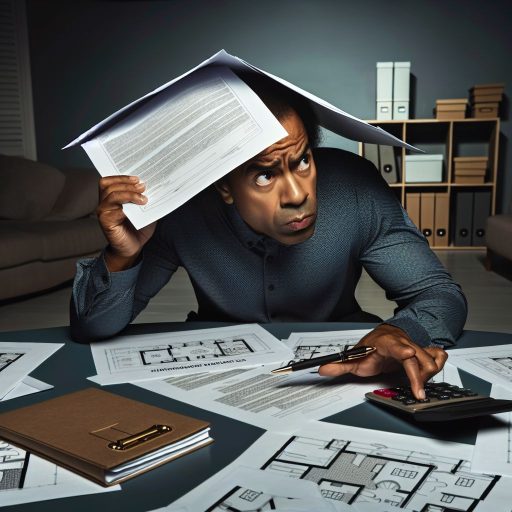Inspecting the Roof for Signs of Damage or Wear
Visual Inspection of the Roof
Start by observing the overall condition of the roof.
Look for any missing, cracked, or curling shingles.
These issues can indicate potential leaks and further damage.
Check for sagging or uneven areas as well.
Such signs often suggest structural problems underneath.
Checking the Flashing and Seals
Next, inspect the flashing around chimneys and vents.
Flashing should fit tightly without gaps or rust.
Look for any signs of deteriorating seals as well.
Improper seals can lead to leaks during heavy rain.
Examining Gutters and Downspouts
Evaluate the gutters for debris build-up and wear.
Clogged gutters can cause water to back up onto the roof.
Also, check that downspouts direct water away from the foundation.
This step prevents water damage to your home’s structure.
Assessing Age and Maintenance Records
Inquire about the age of the roof during your visit.
A roof older than 20 years may require replacement soon.
Ask the owner for maintenance records as well.
Consistent maintenance practices can extend a roof’s lifespan.
Working with a Professional Inspector
Consider hiring a professional inspector for a deeper evaluation.
They will check structural integrity and potential hidden issues.
A thorough inspection can save you from costly future repairs.
Evaluating Plumbing Fixtures and Checking for Leaks
Inspecting Faucets and Sinks
Start by examining all faucets for any visible signs of leaks.
Check for water stains or corrosion around the base.
Turn on each faucet to test water pressure and flow.
Pay attention to any unusual noises, which could indicate problems.
Ensure that the hot and cold water flows correctly from each fixture.
Assessing Toilets
Look for cracks in the toilet bowl and tank.
Check the connections at the base for leaks using tissue paper.
Flush the toilet and monitor for any slow refills.
Listen for any hissing noises, which may suggest a continually running toilet.
Consider how easy it is to flush and how well it cleans.
Evaluating Showers and Bathtubs
Check the showerhead for mineral buildup or leaks.
Inspect the grout around tiles for signs of mold or decay.
Run the shower and look for any pooling water outside the tub.
Test the water temperature and pressure while in use.
Make sure the bathtub drain empties without delay.
Reviewing Water Supply Lines
Examine visible pipes for signs of corrosion or leakage.
Look for any damp spots around connections that could indicate a problem.
Assess the overall condition and material of the plumbing pipes.
Consider asking if the plumbing has been recently updated or replaced.
Be aware of any unusual smells near plumbing fixtures that suggest leaks.
Inspecting the Water Heater
Locate the water heater and check for signs of rust or leaks.
Ensure it is functioning properly and heating water efficiently.
Inquire about the age of the heater and any recent maintenance performed.
Look for any unusual noises coming from the unit during operation.
Consider the capacity of the water heater based on your needs.
Assessing the Condition of Windows and Doors for Insulation
Importance of Insulation
Insulation significantly impacts energy efficiency in a home.
Well-insulated windows and doors can reduce heating and cooling costs.
Additionally, they enhance indoor comfort and prevent drafts.
Visual Inspection
Start with a close visual inspection of the windows and doors.
Look for any gaps between the frames and walls.
Examine the seals for signs of wear or damage.
Also, check the frames for rotting or warping.
Operation Test
Open and close each window and door to test their functionality.
Ensure they operate smoothly without sticking.
If they struggle to open or close, it may indicate underlying issues.
Check for Moisture
Moisture buildup can signal poor insulation or damage.
Inspect the window sills and areas around doors for moisture stains.
Look for condensation between double-paned windows.
This often indicates a failed seal and poor insulation.
Energy Efficiency Ratings
Look for energy efficiency ratings on windows and doors.
Many products display U-factor and Solar Heat Gain Coefficient ratings.
Lower U-factor values indicate better insulation performance.
Professional Inspection
Consider hiring a professional for a thorough assessment.
Experts can identify hidden issues that may be overlooked.
They can also provide recommendations for improvements.
You Might Also Like: Home Inspection Checklist For Rural And Suburban Homes In The USA
Examining Electrical Systems, Outlets, and Panel Functionality
Understanding the Importance of Electrical Systems
Electrical systems are vital for any home.
They provide power to all your devices and appliances.
Moreover, a well-functioning system ensures safety.
It’s essential to evaluate these systems during an open house.
Assessing the Main Electrical Panel
The main electrical panel is the heart of the home’s electrical system.
First, check for rust or corrosion on the panel.
Next, examine the condition of the circuit breakers.
They should be labeled clearly and not show signs of damage.
Additionally, look for any outdated fuses that may need replacing.
Inspecting Outlets and Switches
Outlets play a crucial role in power distribution.
Start by testing each outlet for functionality.
Look for any signs of discoloration or burn marks.
These could indicate serious issues within the wiring.
Furthermore, ensure that all outlets are grounded properly.
Identifying Potential Electrical Hazards
During the open house, stay alert for hazards.
Be on the lookout for exposed wires or loose connections.
These conditions can lead to electrical shock or fire hazards.
Also, check for any smell of burning or overheating components.
If you notice these signs, consider it a red flag.
Ensuring Compliance with Electrical Codes
Electrical work must comply with local building codes.
Inquire about any recent inspections or upgrades.
This information can provide insight into the home’s safety.
A home up to code minimizes future repair costs.
Consulting a Professional
Considering a professional inspection can offer peace of mind.
They can spot issues that might go unnoticed.
For instance, a qualified electrician can inspect wiring thoroughly.
Hence, investing in their expertise can save you money down the line.
See Related Content: How to Determine the True Value of a Home Before Making an Offer
Analyzing the Foundation for Cracks or Settling Issues
Inspecting the foundation is crucial during an open house.
A solid foundation supports the entire structure of the home.
Begin by looking for visible cracks on the surface.
Small cracks may be normal, but larger ones can indicate problems.
Check for horizontal cracks, which are typically more serious.
Also, examine the corners of the foundation for signs of settling.
Notice any uneven floors as this may suggest foundation issues.
Additionally, pay attention to doors and windows that don’t close properly.
These issues can be linked to shifts in the foundation.
It’s wise to look for any gaps around windows and doors.
Next, consider checking the exterior for sloping ground.
Does the land around the home slope towards the foundation?
This can lead to water pooling and cause significant damage.
Note any drainage issues in the yard as well.
Poor drainage can contribute to foundation problems over time.
If you’re unsure, consult a professional inspector for advice.
They can provide a detailed assessment of the foundation’s condition.
Overall, understanding these signs can help avoid costly repairs.
Explore Further: How To Determine Your Budget As A First-Time Homebuyer In The USA

Checking for Mold and Water Damage in Key Areas
Identifying Common Problem Areas
Mold and water damage often hide in key areas of a home.
Check the basement for signs of moisture and mold growth.
Look closely at plumbing fixtures in the kitchen and bathrooms.
Inspect around windows and doors for any water stains.
Be aware of any unusual odors that may suggest dampness.
Evaluating Walls and Ceilings
Look for discoloration or peeling paint on walls.
Examine ceilings for any water spots or sagging sections.
These signs often indicate past or present leaks.
Also, check for cracks in walls that may allow moisture in.
Assessing Flooring and Carpeting
Inspect carpets for dampness or musty smells.
Water damage may cause flooring to warp or buckle.
Ensure that hardwood floors are not lifting or discolored.
Replacing flooring can lead to significant repair costs.
Examining the Roof and Exterior
Check for missing shingles or sagging areas on the roof.
Inspect gutters and downspouts for blockages or damage.
Ensure water drains away from the foundation to prevent issues.
Look for standing water around the property’s exterior.
Seeking Professional Assistance
If you notice any signs of water damage, consider hiring a professional.
Home inspectors can identify underlying issues effectively.
They can provide a detailed assessment of potential repairs.
Early intervention may save you from costly repairs down the line.
Find Out More: Best Practices For Environmental Safety In A Detailed Home Inspection Checklist
Investigating the State of Appliances Included in the Sale
Importance of Appliance Assessment
Evaluating appliances during an open house is crucial for buyers.
This step helps identify potential issues that could arise later.
It ensures you are making a well-informed buying decision.
Key Appliances to Inspect
Several appliances warrant close examination during your visit.
Focus on the refrigerator, dishwasher, stove, and washer-dryer units.
Each of these plays a significant role in daily life.
Checking for Wear and Tear
Inspect the appliances for visible wear and tear.
Look for scratches, dents, and rust on exterior surfaces.
Additionally, check for functionality issues during your inspection.
Testing Performance
If possible, operate the appliances to assess their performance.
Listen for unusual noises while they run.
Also, watch for any error messages on digital displays.
Understanding Age and Maintenance
Inquire about the age of each appliance from the seller.
Older appliances may require costly repairs or replacements.
Ask about maintenance records to determine their care history.
Energy Efficiency Considerations
Check for energy efficiency ratings on each appliance.
More efficient appliances save money on utility bills.
Look for Energy Star certifications as a positive sign.
Impact of Appliance Condition on Overall Purchase
Consider how the condition of appliances affects the home’s overall value.
A home with newer, well-maintained appliances holds greater appeal.
Conversely, outdated systems could lower its market value.
Reviewing the Condition of Flooring and Wall Finishes
Inspecting the Flooring
Start by looking closely at the flooring material.
Check for any scratches, dents, or signs of wear.
Look for uneven surfaces, which may indicate underlying issues.
Consider the type of flooring present.
For example, hardwood floors may show natural aging signs.
Carpet can conceal damage, so lift a corner if possible.
Tile should be inspected for cracks and loose grout.
Note any areas where flooring may transition between rooms.
Ensure transitions are smooth and not prone to tripping hazards.
Evaluating Wall Finishes
Move on to the walls after assessing the flooring.
Examine the wall finishes for peeling paint or wallpaper.
Check for water stains, which indicate possible leaks.
Pay attention to any cracks in the drywall.
Small cracks can be normal, but large ones may concern structural integrity.
Inspect trim and molding for signs of damage or neglect.
Try to identify any paint that might have been poorly applied.
Be aware of any unusual odors that could signal mold or mildew.
Additional Considerations
Take notes on your observations during the open house.
Look for signs of previous repairs that may need re-evaluation.
Ask the seller about any known issues with flooring or walls.
This knowledge will aid in making an informed buying decision.
Think about how repairs might impact your budget and timeline.
Ultimately, thorough inspections can save you from costly future repairs.
Additional Resources
Home Maintenance Checklist to Avoid Costly Repairs




